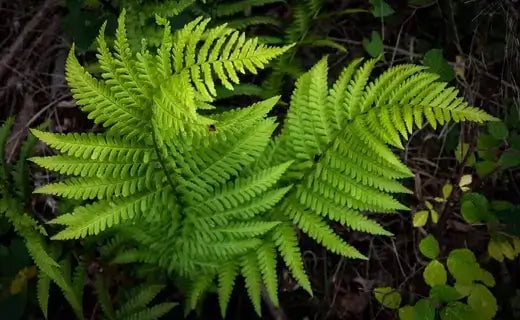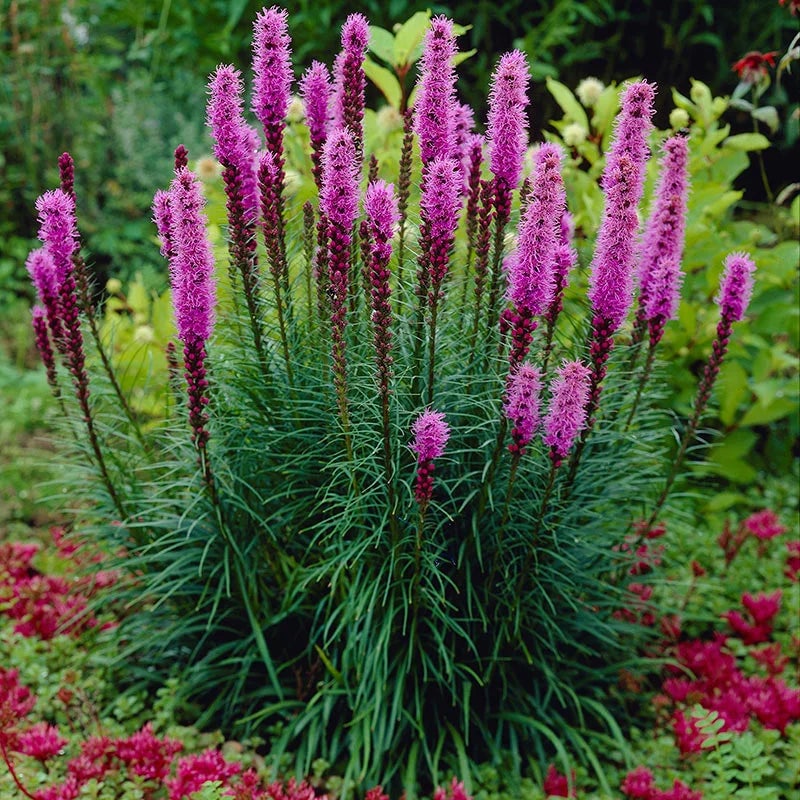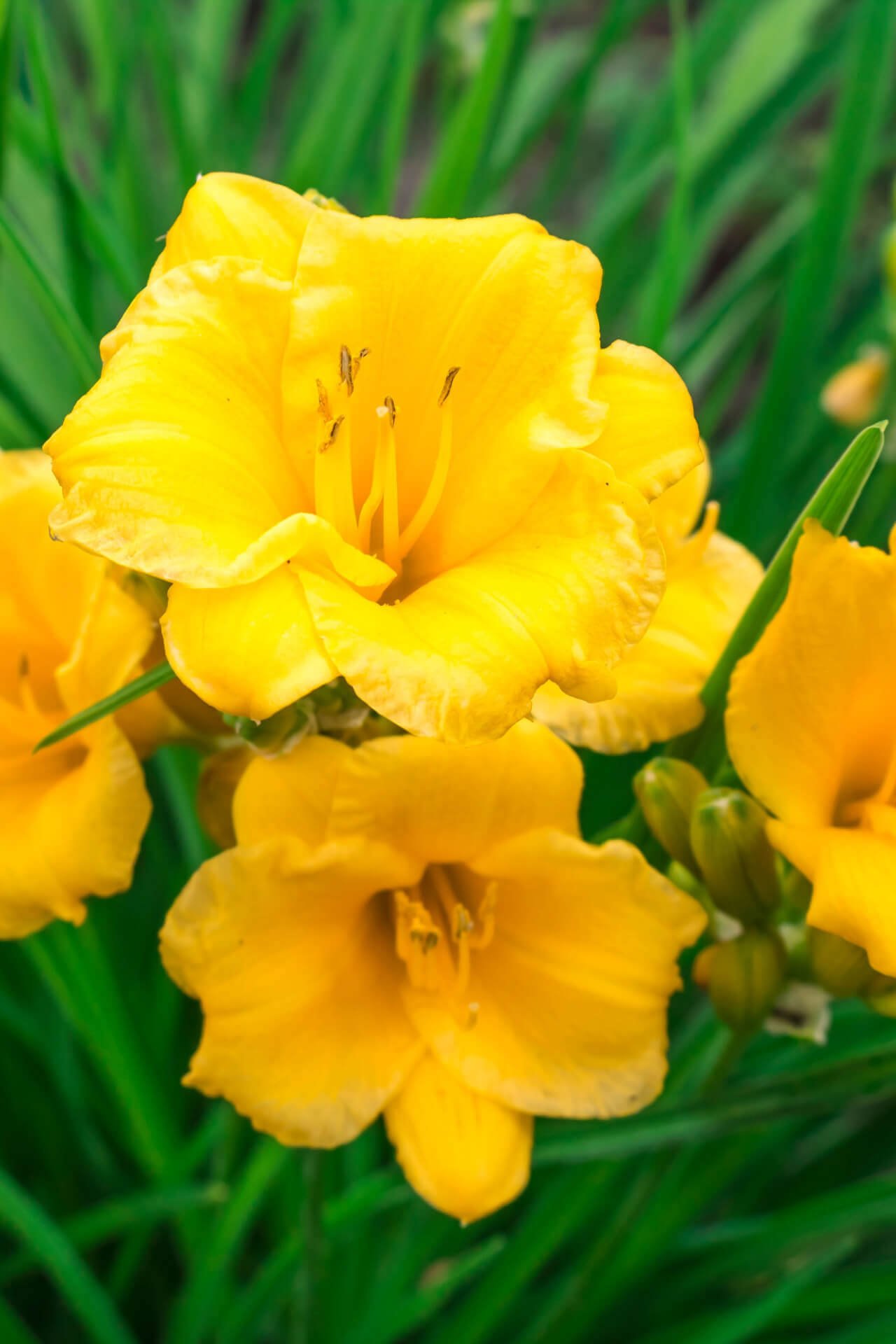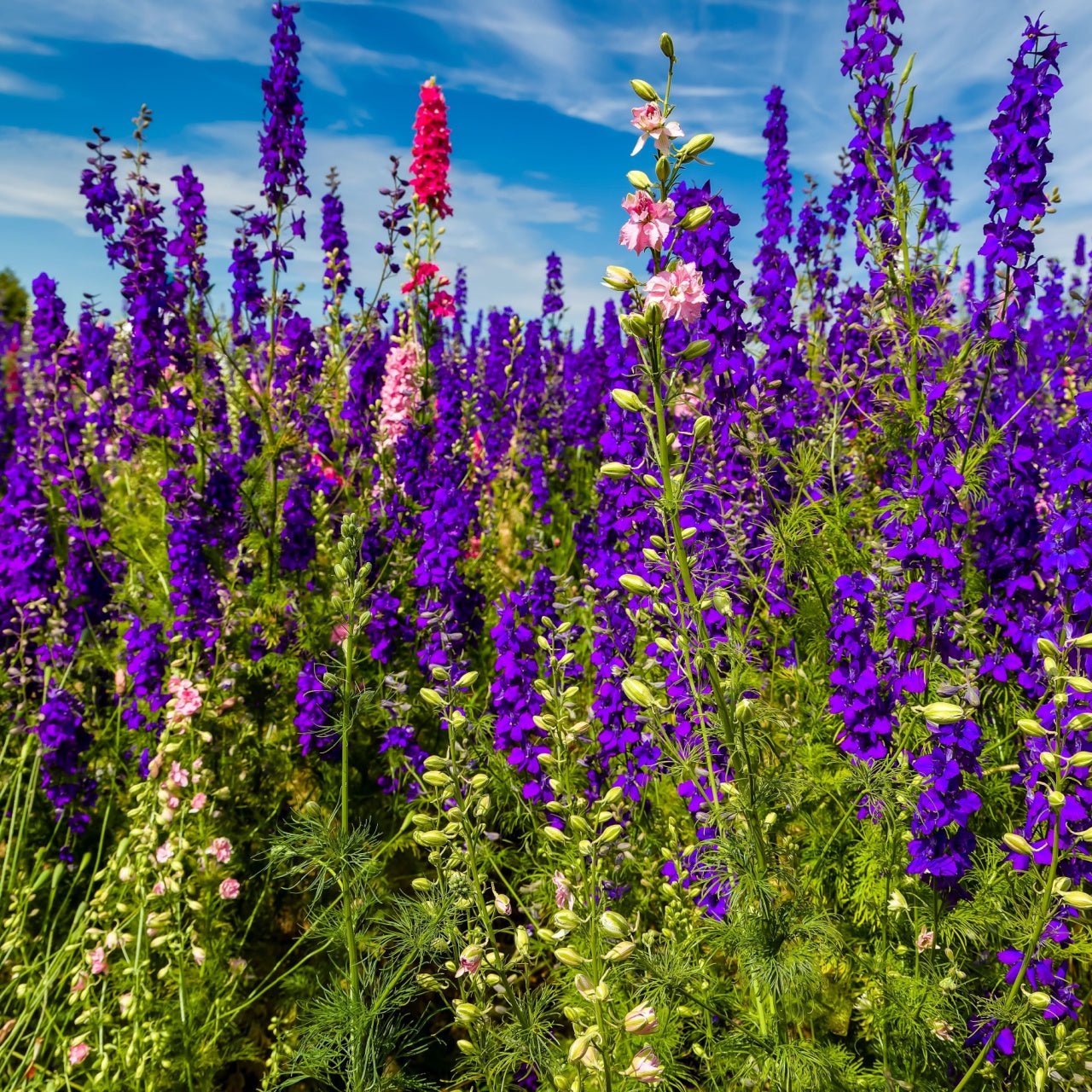Colorful Beauty
Sun perennials are a gardener's delight, offering vibrant and long-lasting blooms that return year after year. These hardy plants thrive in full sunlight, transforming your garden into a colorful haven. This article explores popular sun perennials, including blazing stars, daylilies, Shasta daisies, bee balm, coneflowers, larkspur, blue vervain, and chicory plants.
Blazing Stars (Liatris spp.)
Blazing stars, also known as gayfeather or liatris, are striking perennials with tall spikes of vibrant, tuft-like flowers. Their unique, bottlebrush-shaped blooms are a magnet for pollinators like butterflies and bees. Blazing stars come in various colors, including purple, pink, and white, adding a dynamic dimension to your garden's color palette. They are drought-tolerant and easy to grow, making them an excellent choice for sunny, well-drained locations.
Daylilies (Hemerocallis spp.)
Daylilies are beloved for their versatility and showy blossoms that last only a day but are produced in profusion throughout the summer. These perennials come in various colors and sizes, making finding the perfect match for your garden easy. Daylilies are incredibly low-maintenance, requiring little care beyond regular watering and dividing every few years. They are true sun-loving beauties that can brighten up any landscape.
Shasta Daisies (Leucanthemum × superbum)
Shasta daisies are classic sun perennials known for crisp white petals and sunny yellow centers. These cheerful flowers evoke feelings of simplicity and purity. Shasta daisies are hardy, reliable, and perfect for creating a cottage garden feel. They thrive in well-drained soil and make fantastic cut flowers. Their blooms attract pollinators and add a touch of elegance to any garden.
Bee Balm (Monarda spp.)
Bee balm is a sun perennial that adds color and supports pollinators like bees and hummingbirds. With striking tubular flowers in red, pink, and purple shades, bee balm creates a vibrant display in your garden. The aromatic leaves of bee balm can be used for tea, and its blooms are a showstopper in any sunny location.
Coneflowers (Echinacea spp.)
Coneflowers are popular among gardeners for their eye-catching, daisy-like flowers with prominent cone-shaped centers. These perennials come in shades of purple, pink, and white. Coneflowers are attractive and beneficial for the ecosystem, as they attract butterflies and provide bird seeds. They are low-maintenance and drought-tolerant, making them ideal for sunny spots in your garden.
Larkspur (Delphinium spp.)
Larkspur is an elegant addition to any garden, known for its tall spikes of densely packed, spurred flowers. These sun-loving perennials come in various colors, from deep blues and purples to pinks and whites. Larkspur adds vertical interest and a touch of drama to your garden landscape. However, they can be toxic if ingested, so exercise caution if you have pets or children.
Blue Vervain (Verbena hastata)
Blue vervain is a native North American perennial with tall spikes of tiny blue-violet flowers. It's an excellent choice for damp areas in full sun, where its striking blooms can attract pollinators and beneficial insects. Blue vervain has a long history of medicinal and herbal use, and its presence in your garden can promote biodiversity and support local ecosystems.
Chicory Plants (Cichorium intybus)
Chicory plants are known for their striking blue flowers and bitter-edged leaves, often used in salads. These sun-loving perennials are also well-known for their deep taproots, which can help improve soil quality and break up compacted earth. Chicory plants are a hardy addition to your garden, requiring minimal maintenance once established.
Incorporating these sun perennials into your garden adds visual appeal and benefits local wildlife and ecosystems. Their vibrant colors, resilience, and low maintenance requirements make them an excellent choice for any gardener looking to create a beautiful outdoor space. So, let your garden bask in the radiant beauty of these sun-loving perennials.
Read more

These fascinating plants possess a remarkable history, dating back hundreds of millions of years, and their enduring presence on Earth can be traced through the fossils they've left behind.

Whether you encounter mosses in a tranquil forest, a vibrant moss wall, or a rocky cliffside, take a moment to appreciate moss's remarkable and often underrated world.






